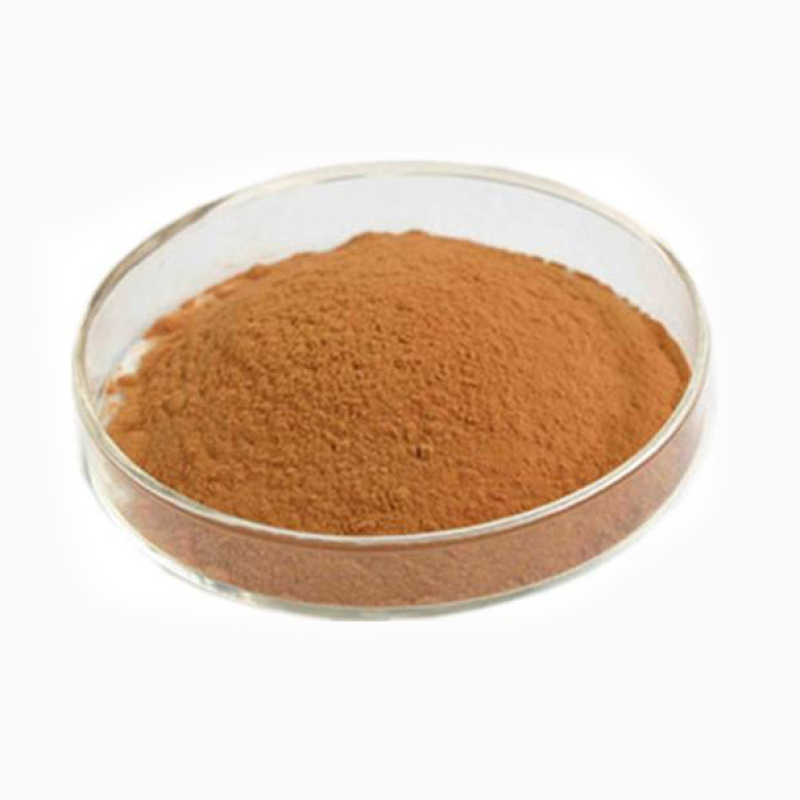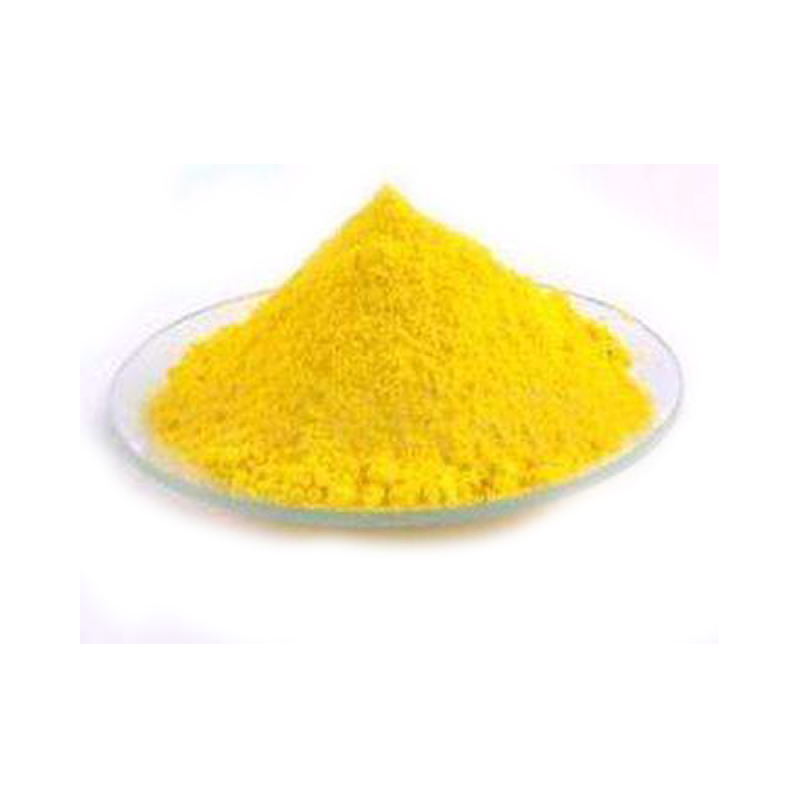Products Description of Diethylenetriaminepenta(methylene-phosphonic acid) CAS#15827-60-8DTPMPA is used as a scale inhibitor for circulating cooling water and boiler water in water treatment. It is particularly suitable for alkaline circulating cooling water as a scale inhibitor without pH adjustment. It can also be used as a scale inhibitor for oil field injection water, cooling water and boiler water containing high barium carbonate. When this product is used alone in a compound agent, there is no need to add a dispersant, and the amount of dirt deposition is still very small.
Contact Now
Diethylenetriaminepenta(methylene-phosphonic acid) Chemical PropertiesBoiling point 1003.3±75.0 °C(Predicted)density 1.35 (50% aq.)vapor pressure 0Pa at 25℃storage temp. Hygroscopic, -20°C Freezer, Under inert atmospheresolubility Aqueous Base (Sparingly), Waterform Oilpka0.59±0.10(Predicted)color Pale Yellow to BrownWater Solubility 500g/L at 25℃BRN 2068968InChIKeyDUYCTCQXNHFCSJ-UHFFFAOYSA-NLogP-3.4CAS DataBase Reference15827-60-8(CAS DataBase Reference)EPA Substance Registry SystemPhosphonic acid, [[(phosphonomethyl)imino]bis[2,1-ethanediylnitrilo
Contact Now
Products Description of Amino tris(methylene phosphonic acid) CAS#6419-19-8Chlorotrimethylenephosphonic acid, also known as aminotrimethylenephosphonic acid (ATMP), has good chelation, low-limit inhibition and lattice distortion effects. It can prevent scale-forming salts in water from forming scale, especially calcium carbonate scale. Aminotrimethylenephosphonic acid is chemically stable in water and is not easily hydrolyzed.
Contact Now
Trihydroxymethylpropyl Trioleate CAS 11138-60-6Insoluble in water, soluble in a variety of organic solvents, such as ethanol, ether, acetone, etc. It has good chemical stability, but may decompose or react under high temperature, strong acid, strong alkali and other conditions.It has excellent lubrication properties and can effectively reduce friction and wear of mechanical equipment.
Contact Now
Products Description of Bis-phosphonic acid tetrasodium salt CAS#3794-83-0This product is a brown-yellow viscous liquid. Relative density (20°C) 1.40. Pure product melting point 198-199°C, soluble in water and ethanol.
Contact Now
Products Description of METHYLENE BLUE CAS#61-73-4Methylene blue (MB) is a reducing agent that is easily soluble in water and easily crosses cell membranes. It has relatively no toxic side effects and is an approved clinical drug. Since its introduction to the biological community in the 19th century, methylene blue has been widely used: as a dye in neurochemicalbook anatomy and bacteriology; in biochemical research, methylene blue serves as an indicator of redox effects.
Contact Now
Products Description of ForchlorfenuronCAS#68157-60-8Chloropyridin-4-yl [1-(2-chloropyridin-4-yl)-3-phenylurea, CPPU], also known as chlorpyrifos and KT-30, is a plant growth regulator of the cytokinin class. It has the effects of inducing callus growth and promoting bud development before harvest. After harvest, it has a significant effect on controlling post-harvest leaf yellowing and post-harvest diseases of various fruits and vegetables.
Contact Now
Products Description of L-GLUCOSE CAS#921-60-8L-glucose is the enantiomer of D-glucose, a naturally occurring carbohydrate used in numerous cellular processes.L-GLUCOSE Chemical PropertiesMelting point 153-156 °C(lit.)Boiling point 232.96°C (rough estimate)density 1.2805 (rough estimate)refractive index -52 ° (C=5, H2O)storage temp. 2-8°Csolubility H2O: 0.1 g/mL, clear, colorlessform aqueous ethanol solutionpka12.45±0.20(Predicted)color WhiteWater Solubility Soluble in water, alcohol.Merck 14,4459BRN 1724626Stability:Stable.
Contact Now
Products Description of TRANS-1,2-DICHLOROETHYLENE CAS#156-60-5Trans-1,2-dichloroethylene is a chemical substance, a colorless, volatile liquid with a slightly pungent odor, flammable, and its vapor can form an explosive mixture with air. It can cause combustion and explosion when exposed to open flames and high heat. It can decompose into highly toxic phosgene and hydrogen chloride gas when heated in the air. It can react strongly with oxidants.
Contact Now
Products Description of CERIUM(III) CHLORIDE ANHYDROUS CAS#779008-60-5Colorless block crystals. Relative density 3.92. Melting point 848℃. Boiling point 1727℃. Soluble in water, acetone and acid. Easy to deliquesce.Product Application of CERIUM(III) CHLORIDE ANHYDROUS CAS#779008-60-5It is used as petroleum catalyst, raw material of cerium salt, and also used to make metallic cerium.Factory and Equipment ShowFast delivery timeInventory 2-3 working days New production 7-10 working days
Contact Now
Products Description of EDTA CAS#60-00-4Ethylenediamine can be obtained by cyclizing ethylenediaminetetraacetic acid with formamide. This is a drug primarily used to treat psoriasis, also known as psoriasis. But as an organic synthesis intermediate, it is not the main use of EDTA. EDTA and its salts can undergo complex reactions with a variety of metal ions to form a stable cyclic structure, which can effectively reduce or inhibit side reactions or harmful effects caused by metal ions.
Contact Now
Products Description of N-Acetylsulfanilyl chloride CAS#121-60-8Light brown to brown powder or fine crystals.
Contact Now
Products Description of Sodium cyanoborohydride CAS#25895-60-7Sodium cyanoborohydride is a chemical substance, a white or slightly yellow solid powder, and a mild reducing agent.Sodium cyanoborohydride Chemical PropertiesMelting point >242 °C (dec.) (lit.)Boiling point 307°Cdensity 1.083 g/mL at 25 °CFp −1 °Fstorage temp. Store below +30°C.solubility Soluble in water (100 mg/ml, with heating), methanol, ethanol, and THF.
Contact Now
Products Description of 5-Aminoisoquinoline CAS#1125-60-65-Aminoisoquinoline is an organic compound with the chemical formula C9H8N2.5-Aminoisoquinoline Chemical PropertiesMelting point 125-128 °C (lit.)Boiling point 312.78°C (estimate)density 1.1148 (estimate)refractive index 1.7080 (estimate)storage temp. Keep in dark place,Sealed in dry,Room Temperaturesolubility Chloroform, Ethyl Acetate, Methanolpka5.67±0.13(Predicted)form Crystalline Powdercolor Yellow-brownSensitive Light SensitiveBRN 114465CAS DataBase Reference1125-60-6(CAS D
Contact Now
Products Description of PolycaprolactoneCAS#24980-41-4Polycaprolactone (PCL) is a semi-crystalline polymer and a chemically synthesized biodegradable high molecular material. Its structural repeating unit contains 5 non-polar methylene groups - CH2.
Contact Now
Products Description of 2-Phosphonobutane-1,2,4-tricarboxylic acid CAS#37971-36-12-Phosphonobutane-1,2,4-tricarboxylic acid (PBTC) is the latest generation of internationally popular phosphonic acid. It is one of the most widely used and best-performing products in the compounding of high-efficiency scale and corrosion inhibitors. This product is particularly suitable for water conditions with high temperature, high hardness, high alkalinity, high pH, and high concentration ratio.
Contact Now
Products Description of NEODYMIUM NITRATE HEXAHYDRATE CAS#16454-60-7The chemical formula of neodymium nitrate is Nd(NO3)3·6H2O. The molecular weight is 438.35. There are two variants, α and β, with a transition temperature of about 22°C. It is easily soluble in water and ethanol. It forms anhydrous salts by vacuum dehydration and decomposes by strong heat. It is easy to form complex salts with other nitrates.For example: 3Mg(NO3)2·2Nd(NO3)3·24H2O, 3Mn(NO3)2·2Nd(NO3)3·24H2O, 3Ni(NO3)2·2Nd(NO3)3·24H2O, etc.
Contact Now
Products Description of BIS(2-METHOXYETHOXY)METHANE CAS#4431-83-8The molecular formula of bis(2-methoxyethoxy)methane is C7H16O4 and its molecular weight is 164.1995.BIS(2-METHOXYETHOXY)METHANE Chemical PropertiesBoiling point 60°C 1,5mmdensity 0,995 g/cm3vapor pressure 22Pa at 25℃refractive index 1.4140Fp 60°C/1.5mmform liquidcolor ColourlessWater Solubility Fully miscible in water.BRN 1700087LogP-0.69 at 22℃EPA Substance Registry System2,5,7,10-Tetraoxaundecane (4431-83-8)Safety InformationSafety Statements 24/25HS Code 2909199090Pr
Contact Now
Products Description of 7-Methylquinoline CAS#612-60-27-Methylquinoline can be used as a pharmaceutical and pesticide intermediate7-Methylquinoline Chemical PropertiesMelting point 35-37 °C(lit.)Boiling point 258 °C(lit.)density 1.061refractive index 1.6070 to 1.6210Fp >230 °Fstorage temp. Room Temperaturesolubility Chloroform (Slightly), Methanol (Slightly)pka5.44±0.14(Predicted)form Viscous Liquidcolor Off-White to Pale Beige Low-MeltingWater Solubility <0.1 g/100 mL at 20 ºCBRN 110317Stability:Stable.
Contact Now
Products Description of L-Arginine-L-Aspartate CAS#7675-83-4L-Arginine L-aspartate Chemical PropertiesMelting point 220-221 °Cstorage temp. 2-8°Csolubility Very soluble in water, practically insoluble in alcohol and in methylene chloride.color White to Off-WhiteStability:HygroscopicLogP-1.287 (est)CAS DataBase Reference7675-83-4(CAS DataBase Reference)EPA Substance Registry SystemArginine aspartate (7675-83-4)Product Application of L-Arginine-L-Aspartate CAS#7675-83-4Used as cosmetic amino acid nutrient, amino acid nutrient food additive, etc.
Contact Now
Products Description of 4,4'-Diamino-2,2'-Stilbenedisulfonic Acid CAS#81-11-8 4,4'-diaminostilbene-2,2'-disulfonic acid, an organic chemical substance, molecular formula: C14H14N2O6S2.4,4'-Diamino-2,2'-stilbenedisulfonic acid Chemical PropertiesMelting point 300 °Cdensity 1.4732 (rough estimate)vapor pressure 1.3hPa at 25℃refractive index 1.6510 (estimate)storage temp. Keep in dark place,Inert atmosphere,Room temperaturesolubility Aqueous Base (Slightly)pka-1.58±0.50(Predicted)form Crystalline Powdercolor Cream to yellow
Contact Now
Products Description of Coconut oil CAS#8001-31-8Coconut oil is an oil extracted from coconut pulp (dry pulp contains about 63% to 70% oil). It is a white semi-solid lard-like fat. It has a unique coconut fragrance. The main components are glycerides of lauric acid, myristic acid, and oleic acid. The melting point is 23 to 28°C. The relative density is 0.917 to 0.919 (25/25°C). The saponification value is 250 to 264. The iodine value is 8 to 12. The acid value does not exceed 6. It is soluble in alcohol, chloroform, ether, and carbon disulfide, but insoluble in water.
Contact Now
Products Description of (R)-(-)-3-Carbamoymethyl-5-methylhexanoic acid CAS#181289-33-8(R)-(-)-3-(Carbamoylmethyl)-5-methylhexanoic acid is solid at room temperature and pressure, soluble in dimethyl sulfoxide, N,N-dimethylformamide and other organic solvents; it has poor solubility in ether solvents and can be used as an intermediate in chiral organic synthesis.
Contact Now
Products Description of Clavulanic acid CAS#58001-44-8Clavulanate Potassium, trade name potassium clavulanate, is an oxopenicillin β-lactamase inhibitor, which is a β-lactam ring and a hydrogenated isoxazole ring.
Contact Now



































